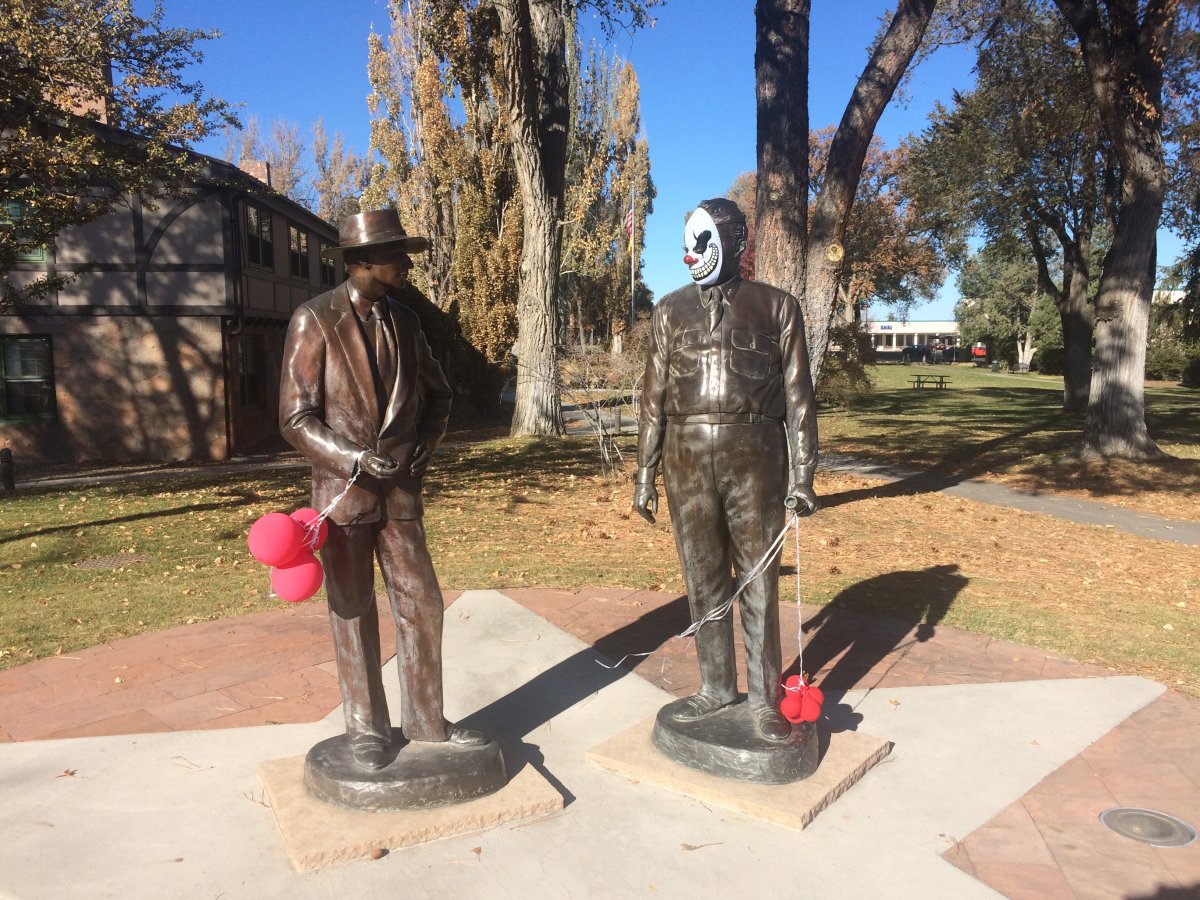November 4, 2020 - Taos, New Mexico
I've been interested in visiting Taos ever since a friend a work told me how much he liked it. I pictured this upscale town in the mountains, with lots of nightlife, craft breweries and art galleries.
In reality, Taos sits on the high desert at the west edge of the mountains and was run-down and shabby. There were a few art galleries and shops in the plaza but nothing to get excited about. Restaurants were few. For some reason we did not go see the Taos Pueblo; I do regret not seeing that. Other than that, unlike many of the places we have visited, this is one place I have no desire to go back to. Maybe my friend was talking about Taos Ski Valley which is ten miles to the north.
We started our Taos sightseeing by driving out to see the nearby Rio Grande Gorge bridge, ten miles northwest of Taos, and ranked the #1 thing to do in Taos on TripAdvisor (which gives you some idea on how much there is to do in Taos; i.e., not much). Yes, this is the same Rio Grande River that flows down to the Gulf of Mexico and forms a good part of the U.S./Mexican border. The bridge was opened in 1965.


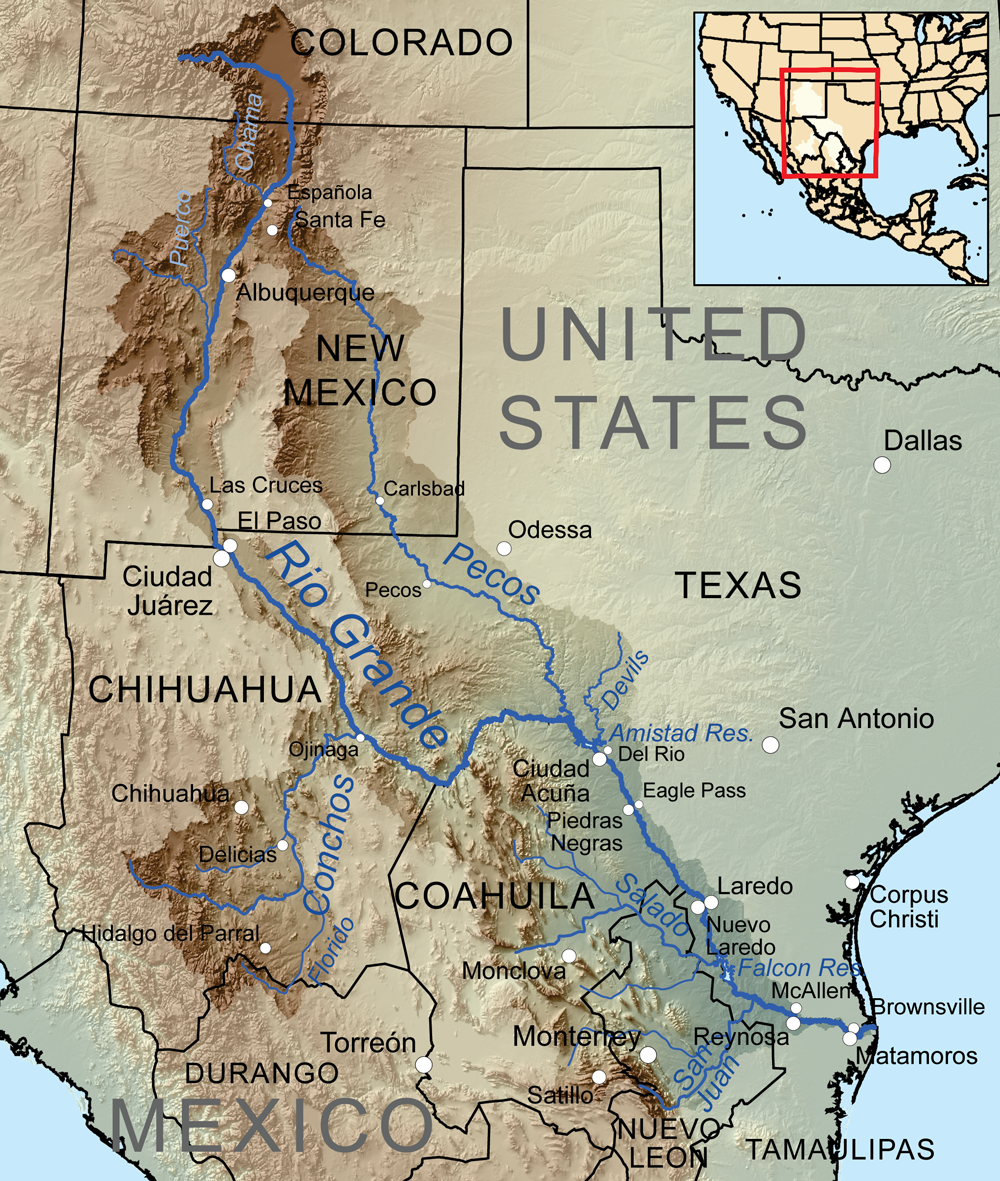
Taos does have its own good-sized airport, which we passed on the way to and from the bridge.
This rough, sage-strewn, high desert area west of Taos is known as the Mesa which has a free-spirited community where people live off the grid, often without plumbing and electricity. It is considered a mecca of sorts for those seeking independent, alternative and often anti-government lifestyles.
Looking north up the Rio Grande.
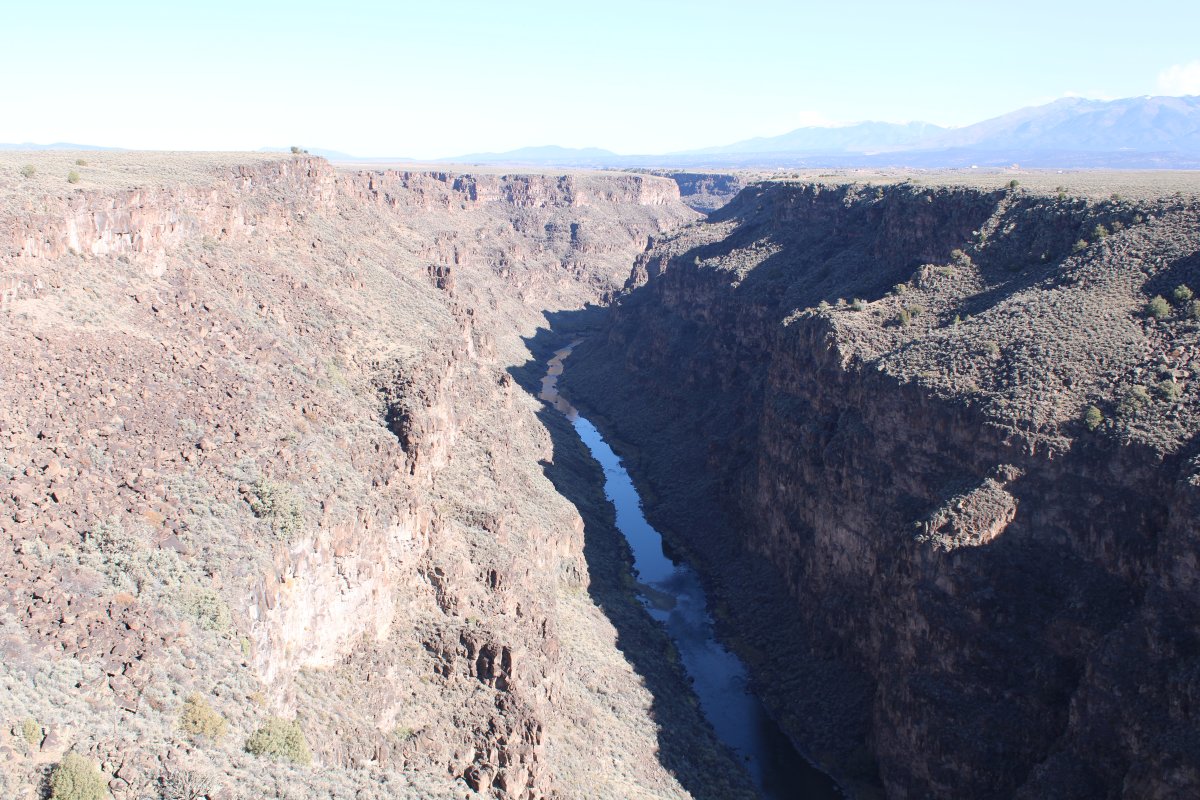

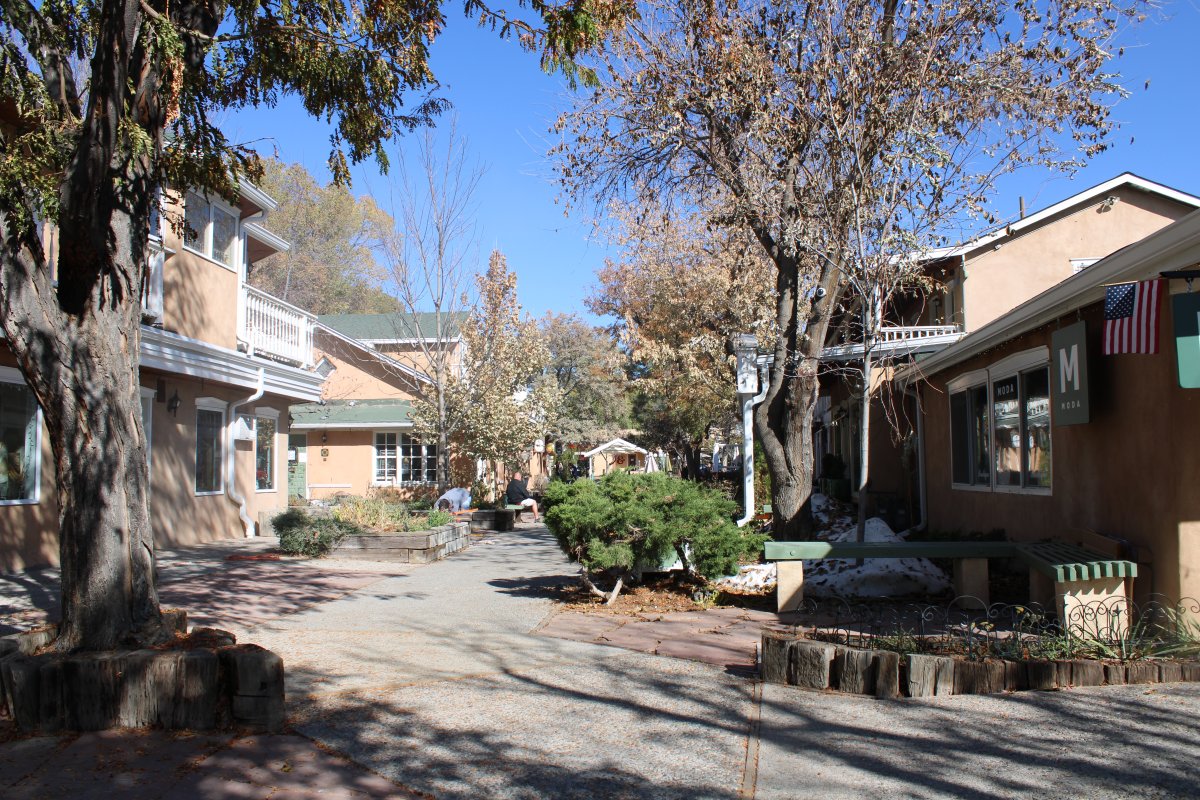

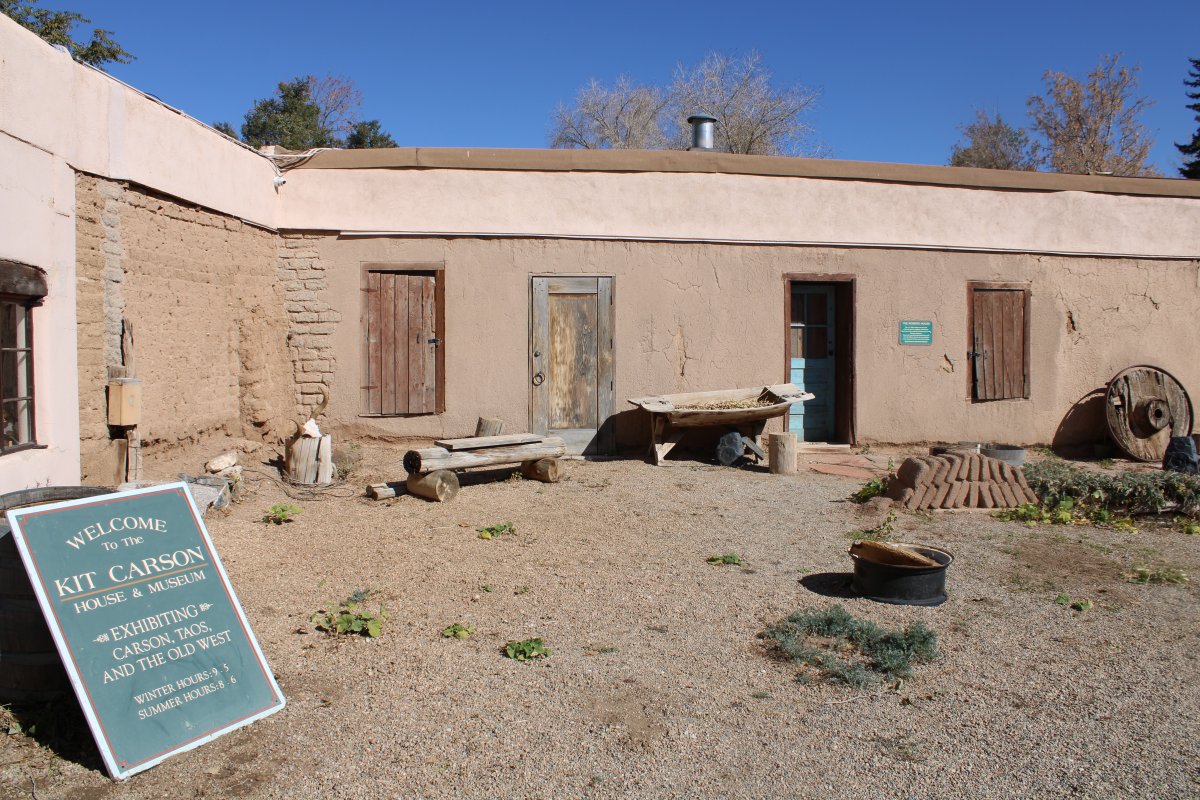

Of course, these days any historical figure is controversial and Carson is no exception.
In 1968, biographer Harvey Carter stated: “In respect to his actual exploits and his actual character, however, Carson was not overrated. If history has to single out one person from among the Mountain Men to receive the admiration of later generations, Carson is the best choice. He had far more of the good qualities and fewer of the bad qualities than anyone else in that varied lot of individuals.”; In 2000, David Roberts wrote, "Carson's trajectory, over three and a half decades, from thoughtless killer of Apaches and Blackfeet to defender and champion of the Utes, marks him out as one of the few frontiersmen whose change of heart toward the Indians, born not of missionary theory but of first hand experience, can serve as an exemplar for the more enlightened policies that sporadically gained the day in the twentieth century."; In 2006, Hampton Sides said that Carson believed the Native Americans needed reservations as a way of physically separating and shielding them from white hostility and white culture. He is said to have viewed the raids on white settlements as driven by desperation, "committed from absolute necessity when in a starving condition." Indian hunting grounds were disappearing as waves of white settlers filled the region.
A review in 2020 by a Taos columnist chronicled the attempts in Taos to rename Kit Carson park which failed, in part, because of the large Hispanic population that disagreed with the attack on its one-time community member, that the Taos Pueblo peoples that survived years of attack by Navajo did not see the story of the Navajo wars in the same light as the Carson detractors, and a community of historians who argue that Kit Carson was hardly a "genocidal killer of Indians."
A couple of portraits of Kit Carson in his later years.
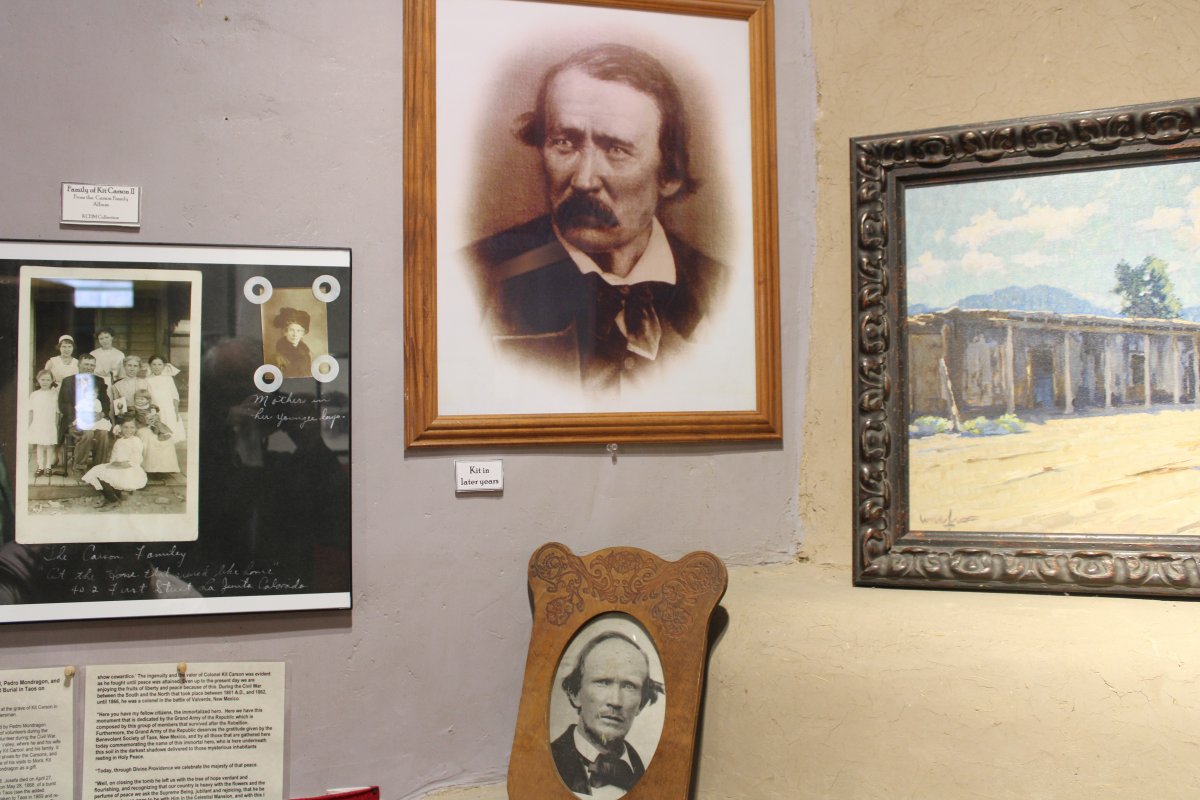

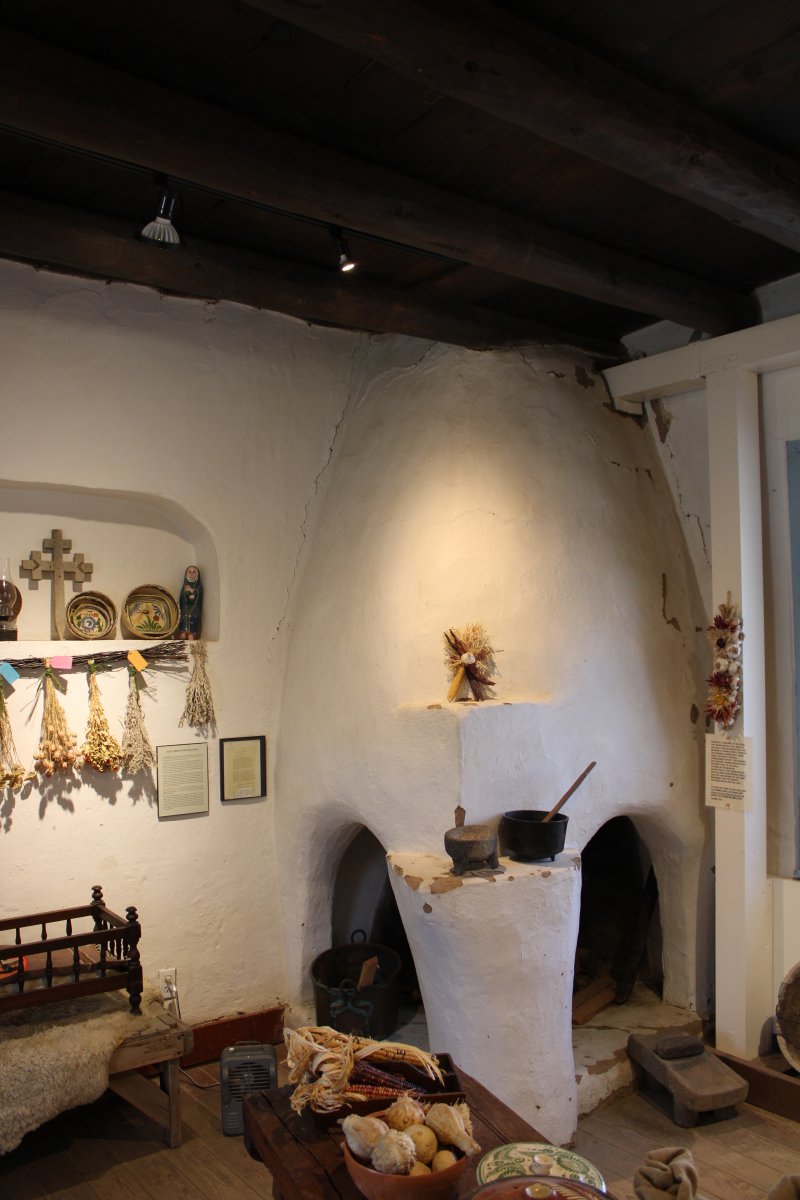

Below are guns of the type used by Kit Carson during his life. Fourth from top is a replica made by the Museum Director himself of the Hawken Rifle, a muzzle-loading rifle built by the Hawken brothers used on the prairies and in the Rocky Mountains during the early frontier days. It has become synonymous with the "plains rifle", the buffalo gun, and the fur trapper's gun. Developed in the 1820s, it was eventually displaced by breechloaders (such as the Sharps rifle) and lever-action rifles which flourished after the Civil War.
One place we didn't go to in Taos but I wish we had was the Taos Pueblo.

Leaving Taos, Lynnette and I drove to Los Alamos, where the atomic bomb was developed and created. It was a pretty drive, about an hour and a half, southwest. It turns out that Los Alamos is located on four mesas of the Pajarito Plateau, as seen below in an aerial photo off Wikipedia.

I hadn't done my homework on Los Alamos very well. They do have a Los Alamos History Museum but it took us awhile to find it and it was closed when we did. It was in a little park so we walked around and looked at a few things like this plaque.

And statues of Oppenheimer and Groves. After Halloween.
There is still a big, operational National Laboratory complex in Los Alamos; we drove by it.
